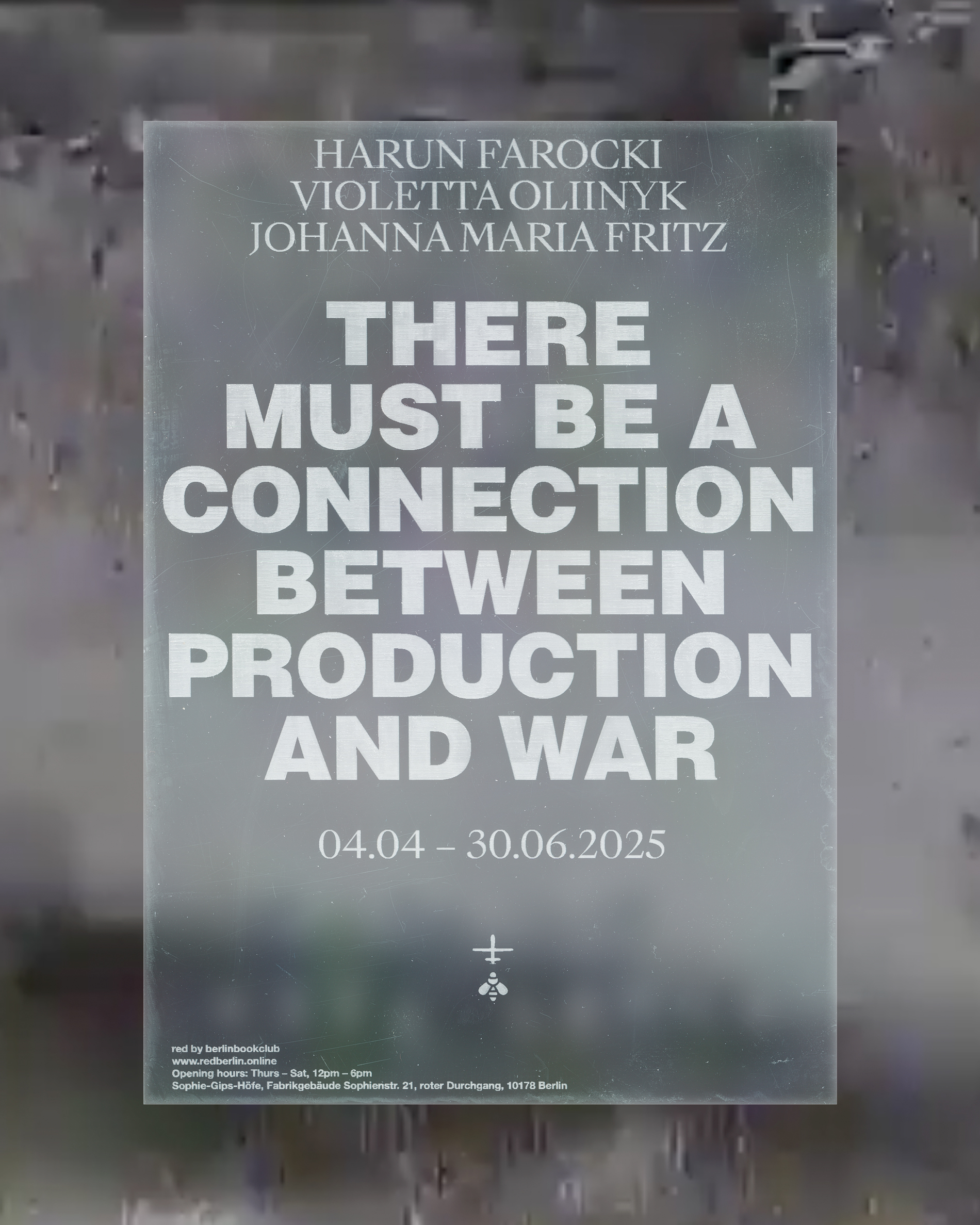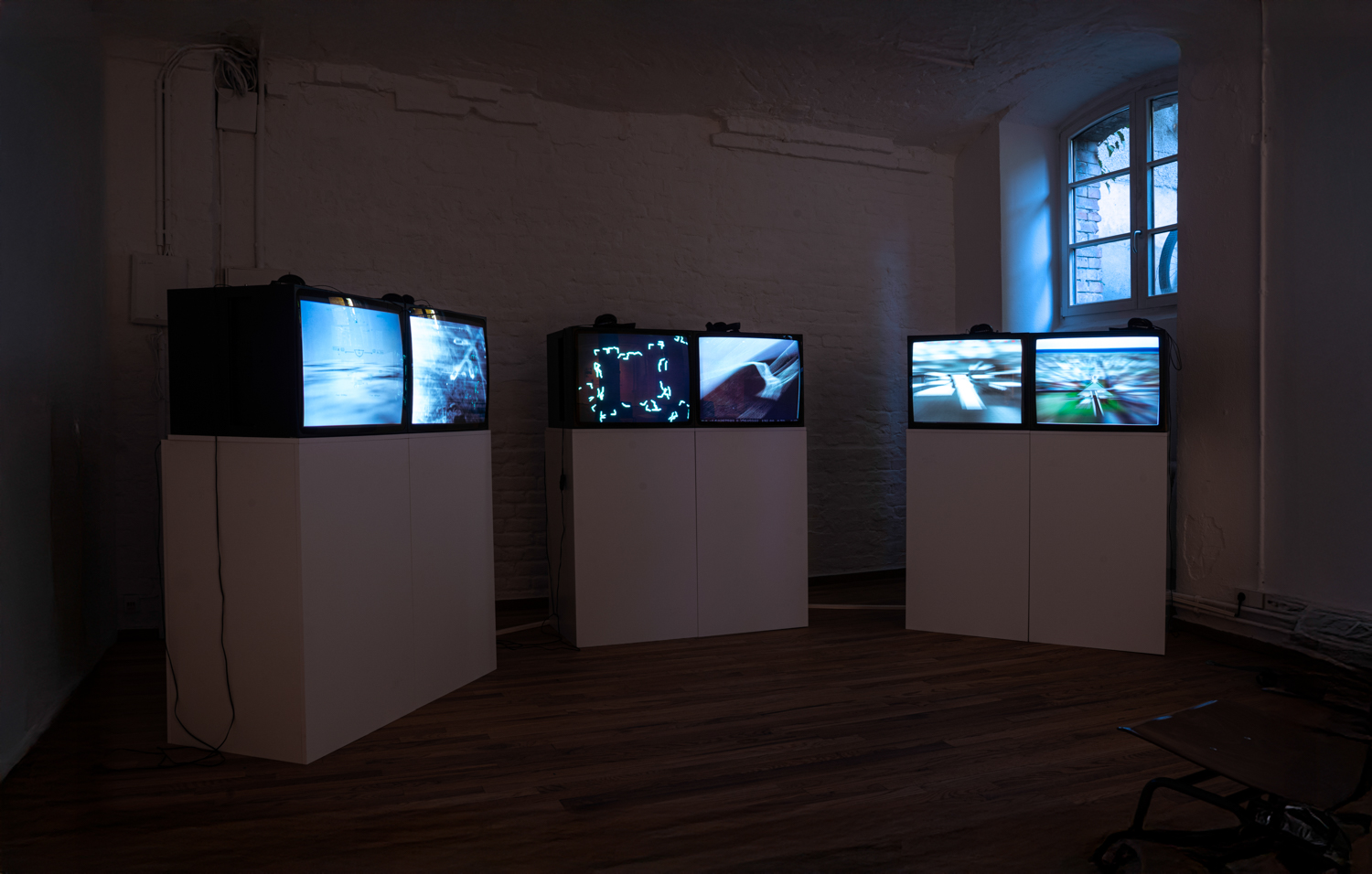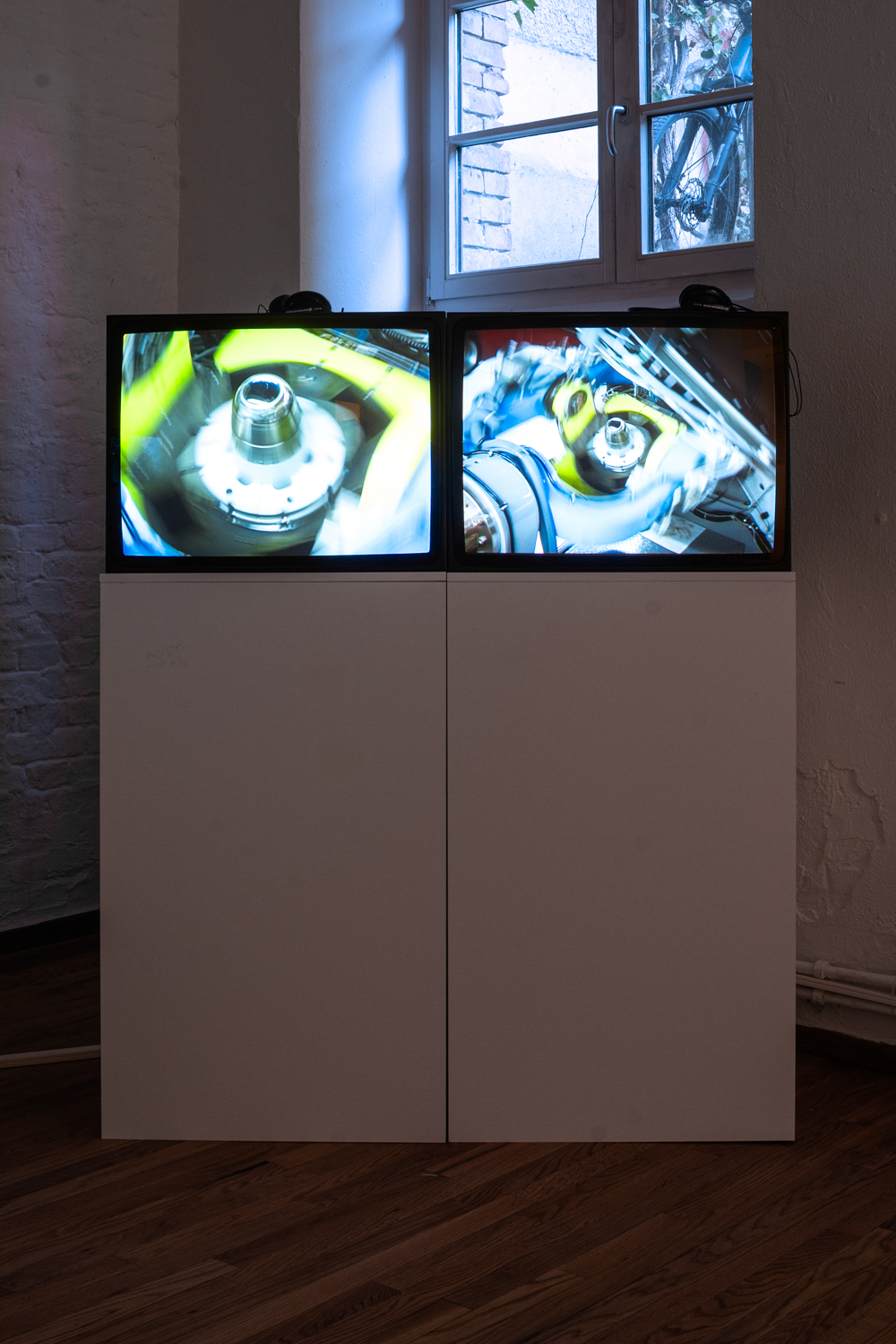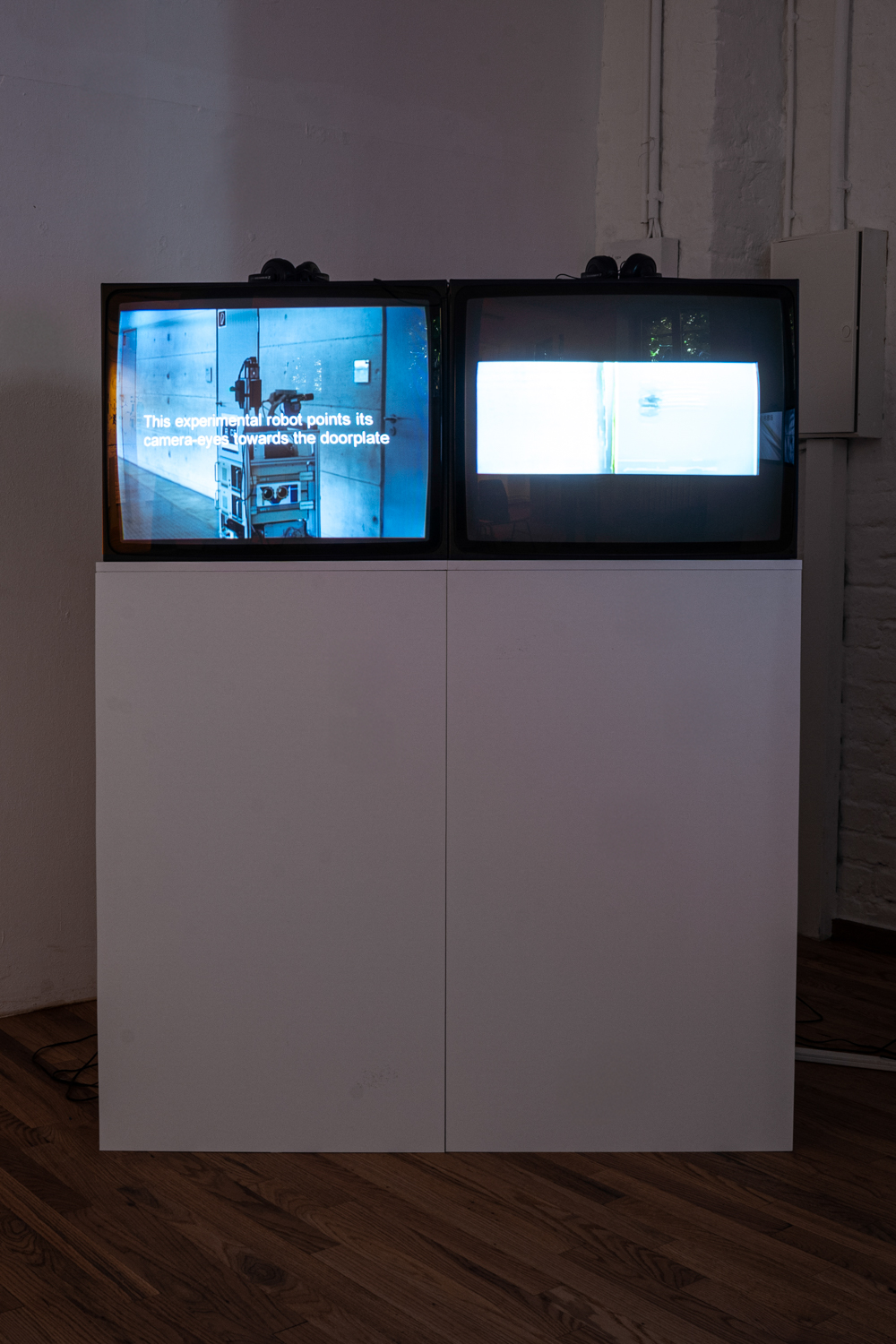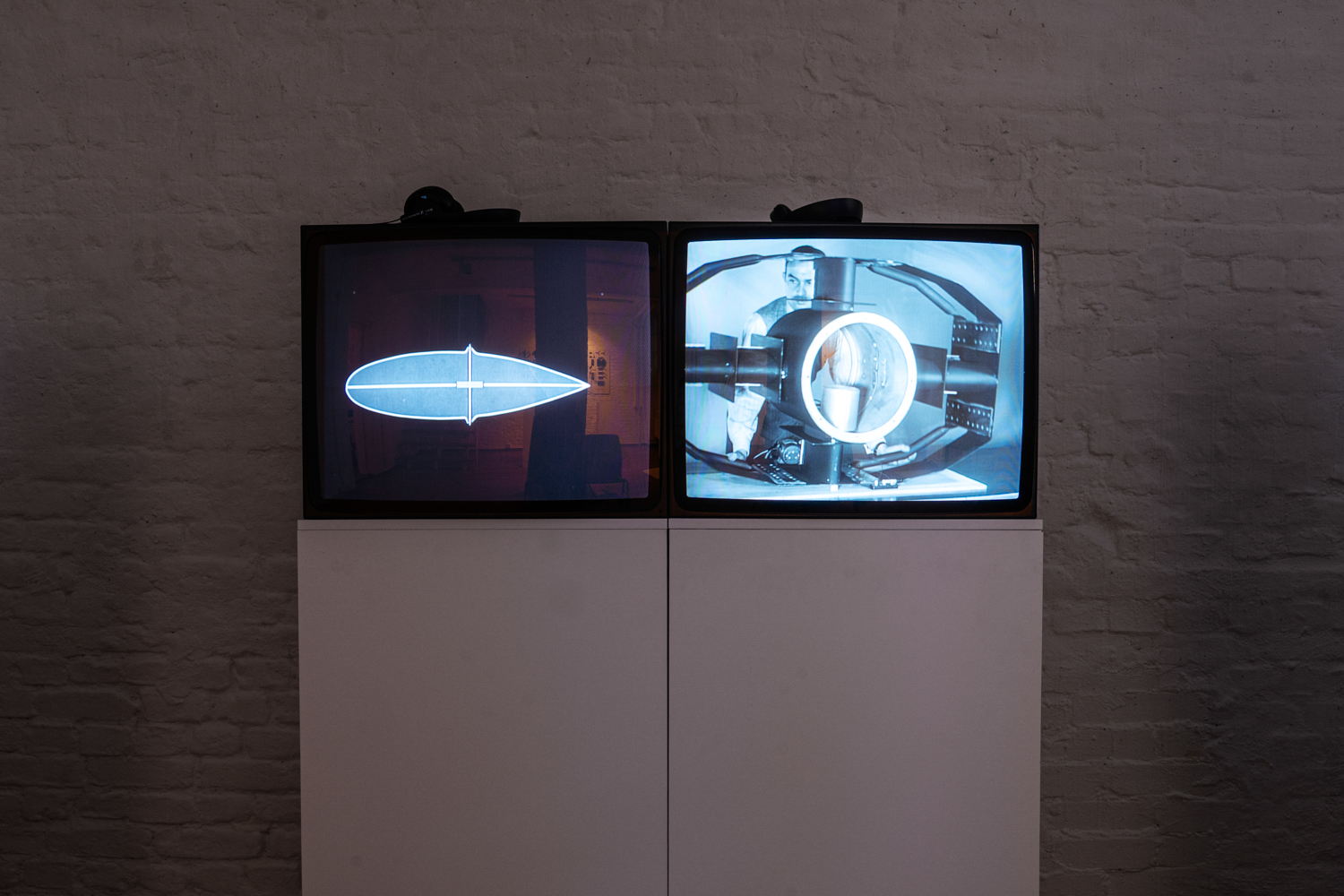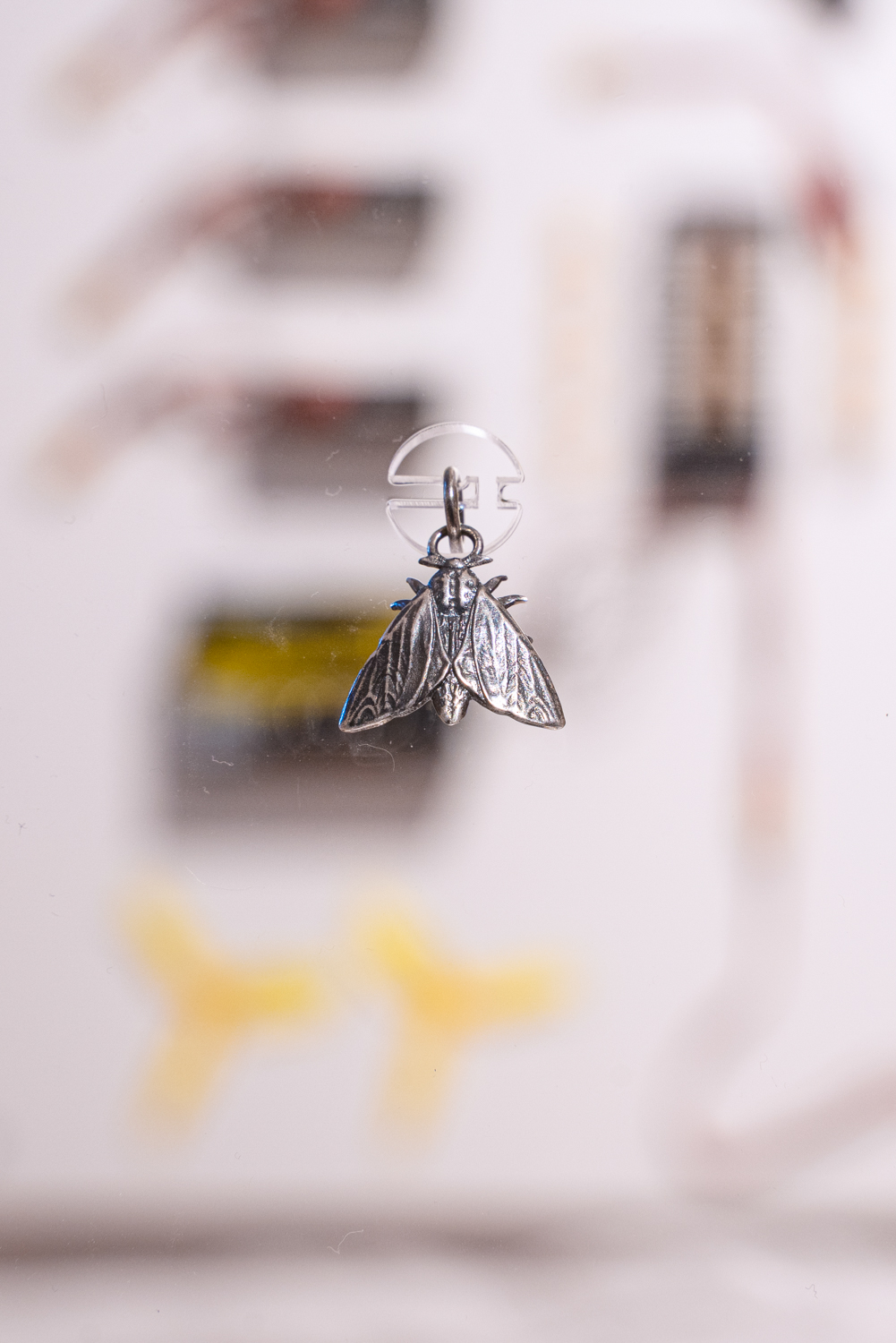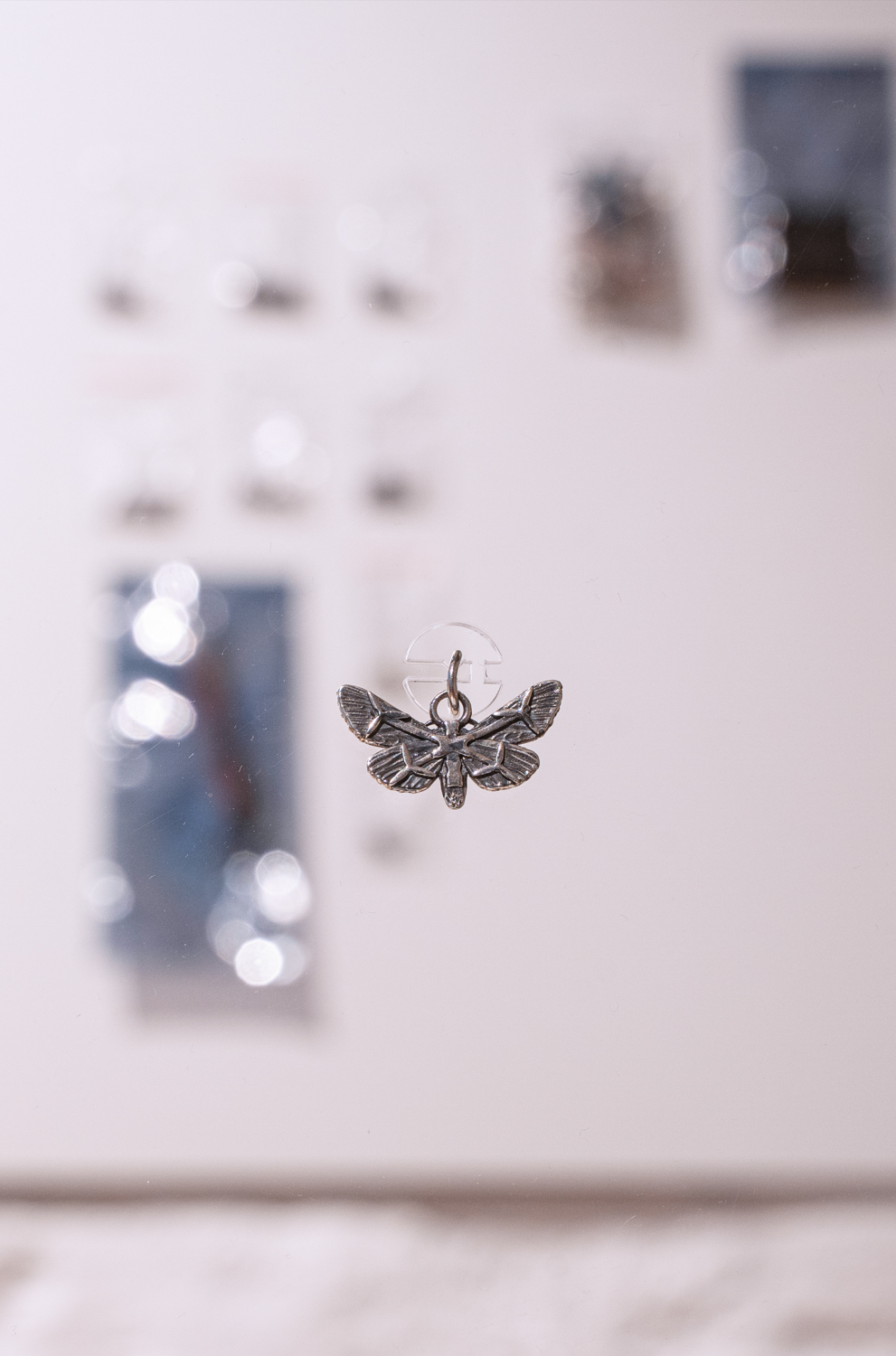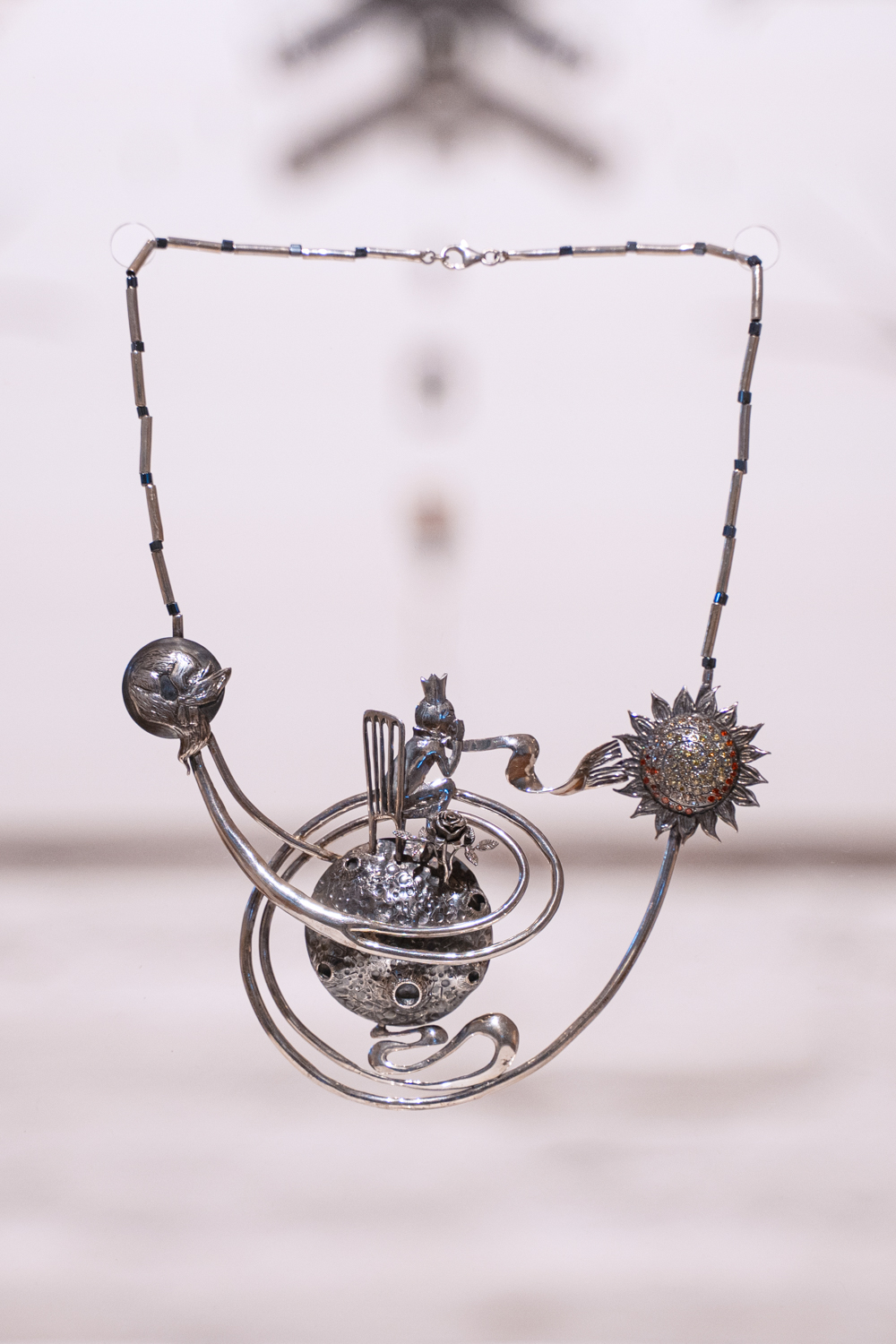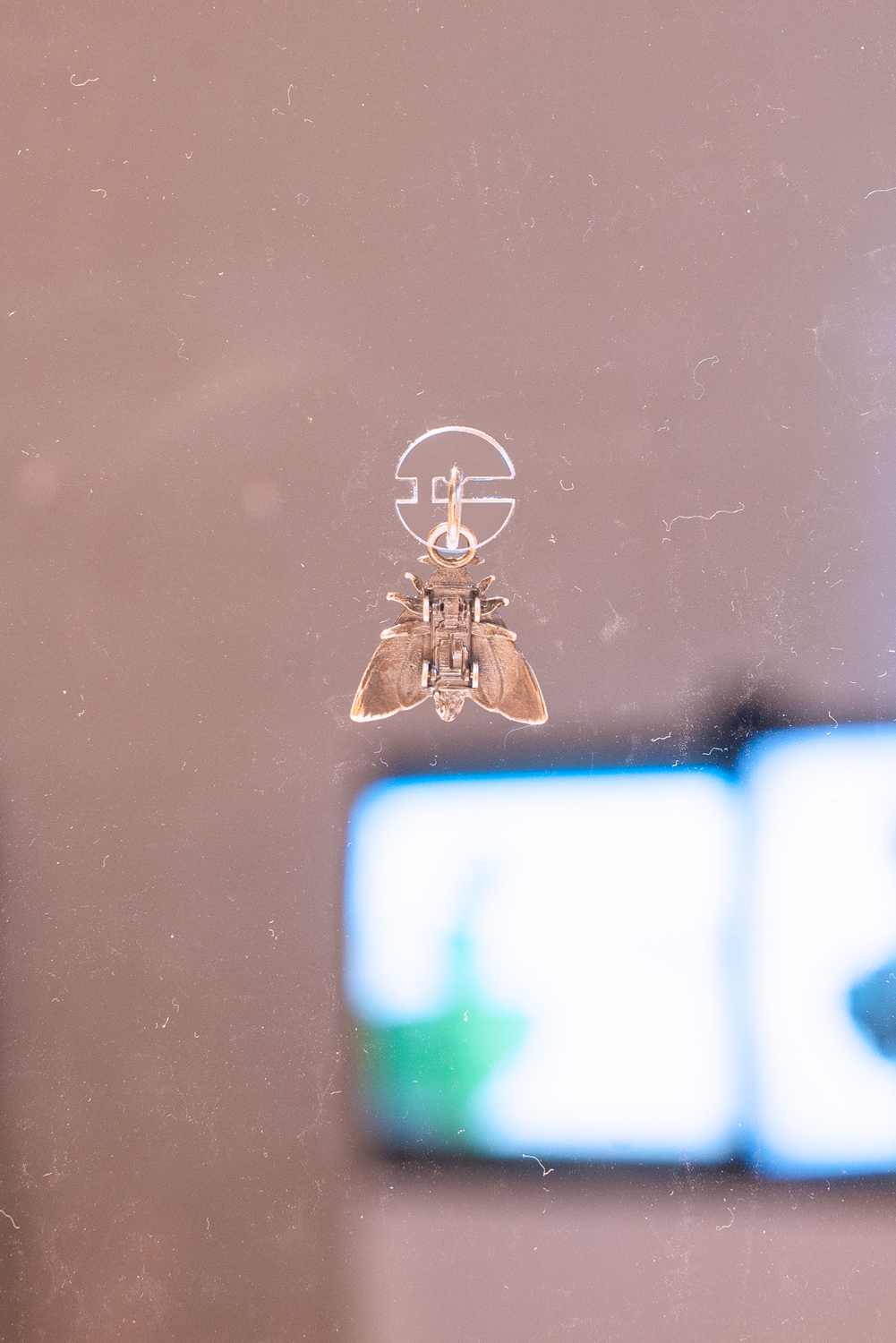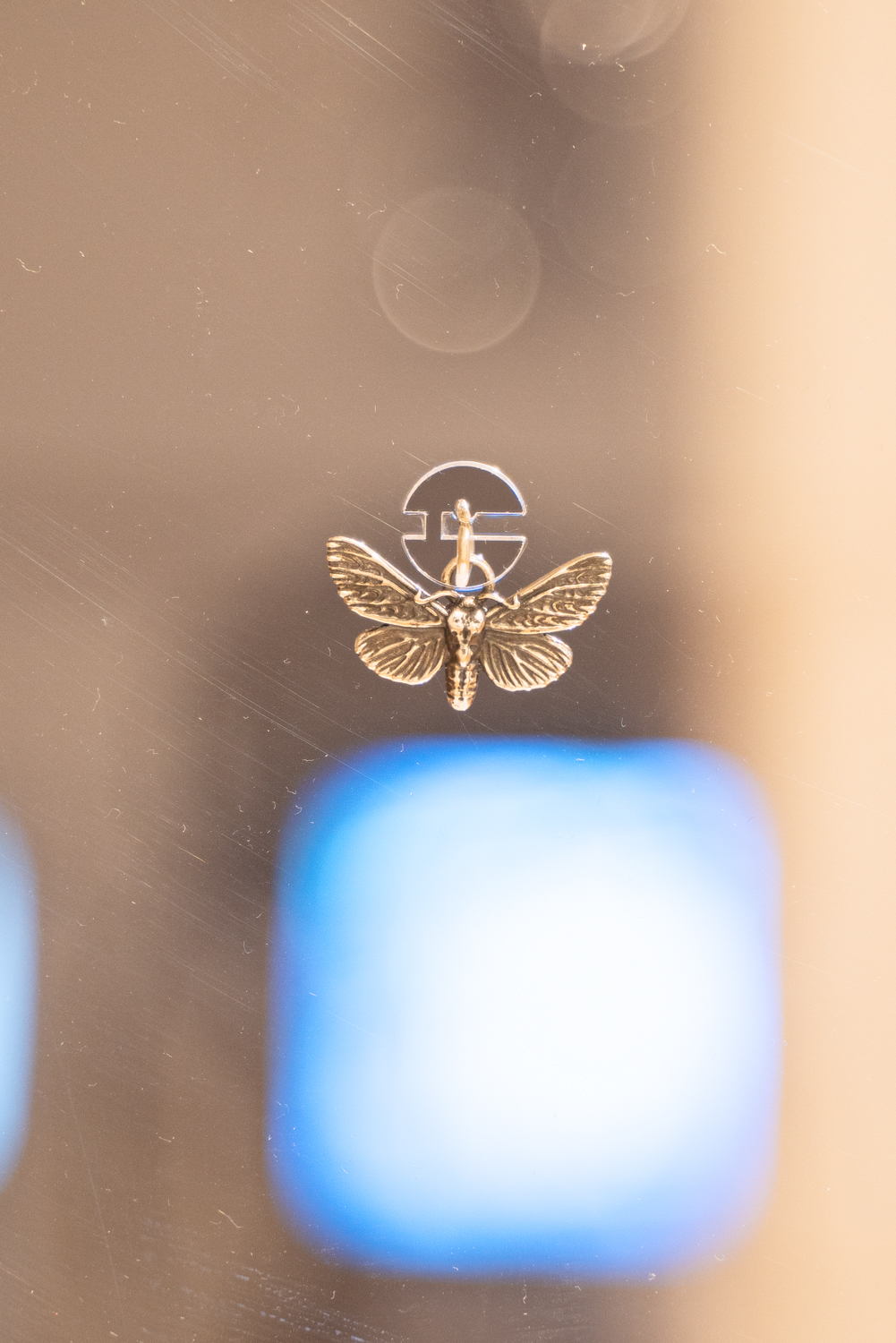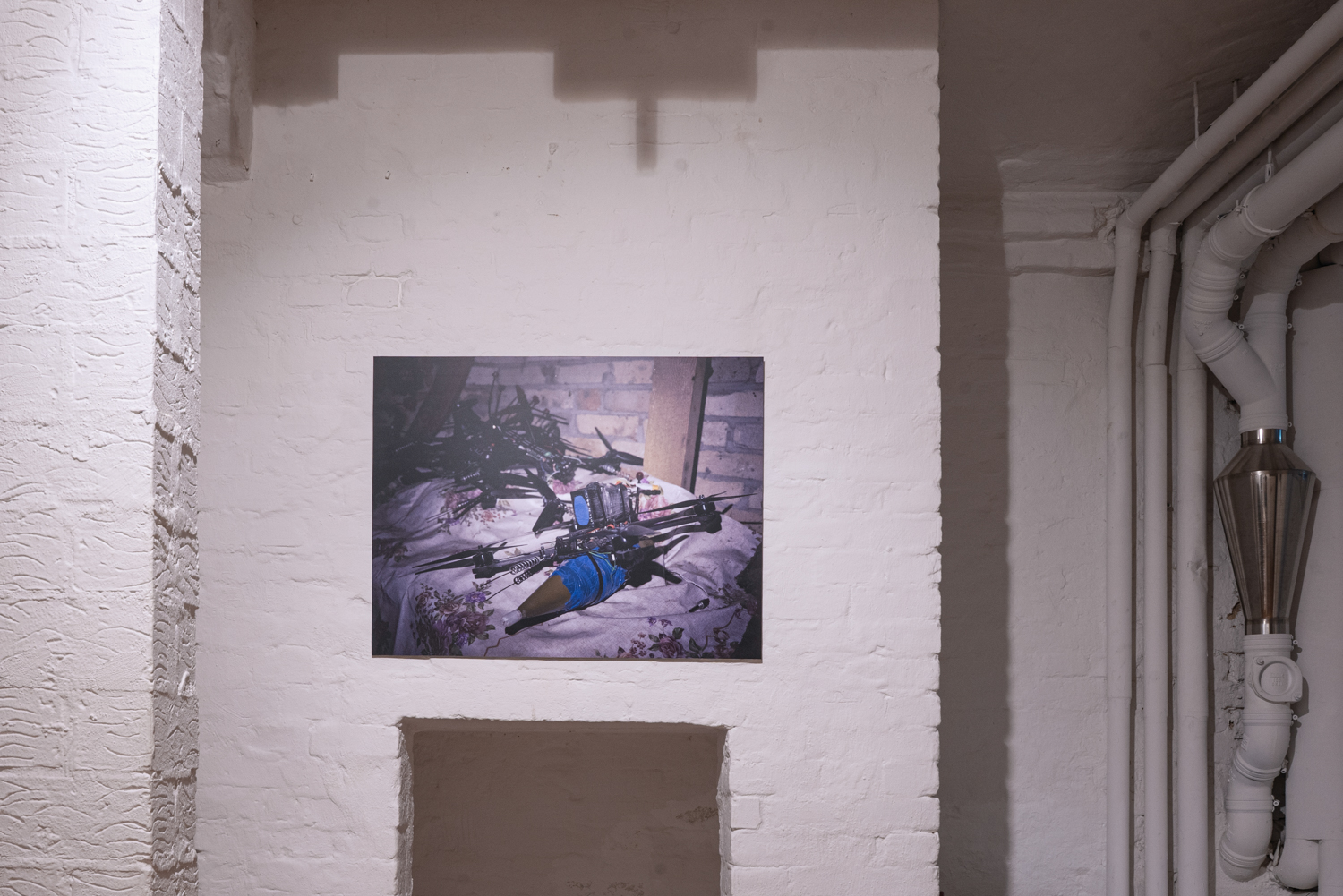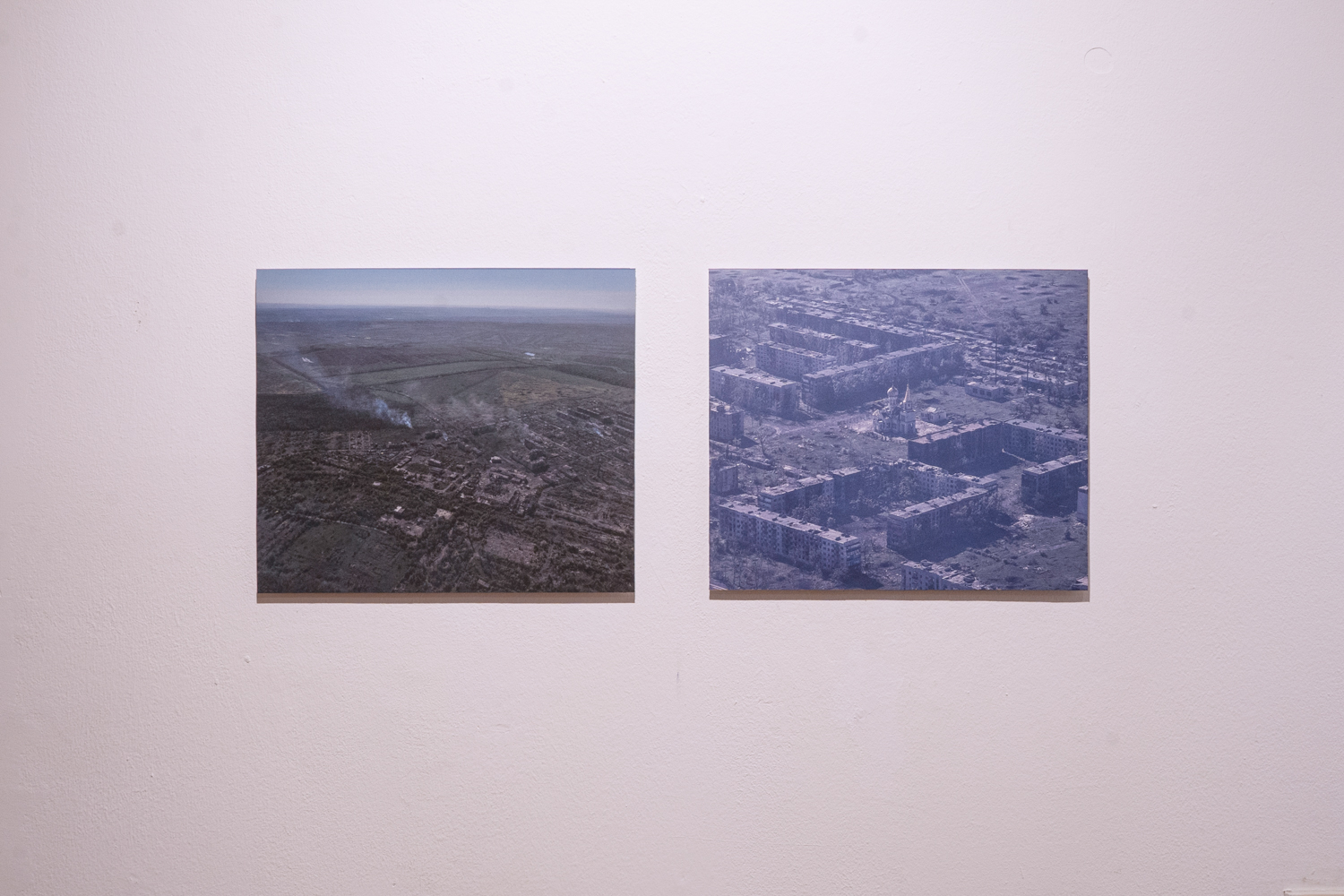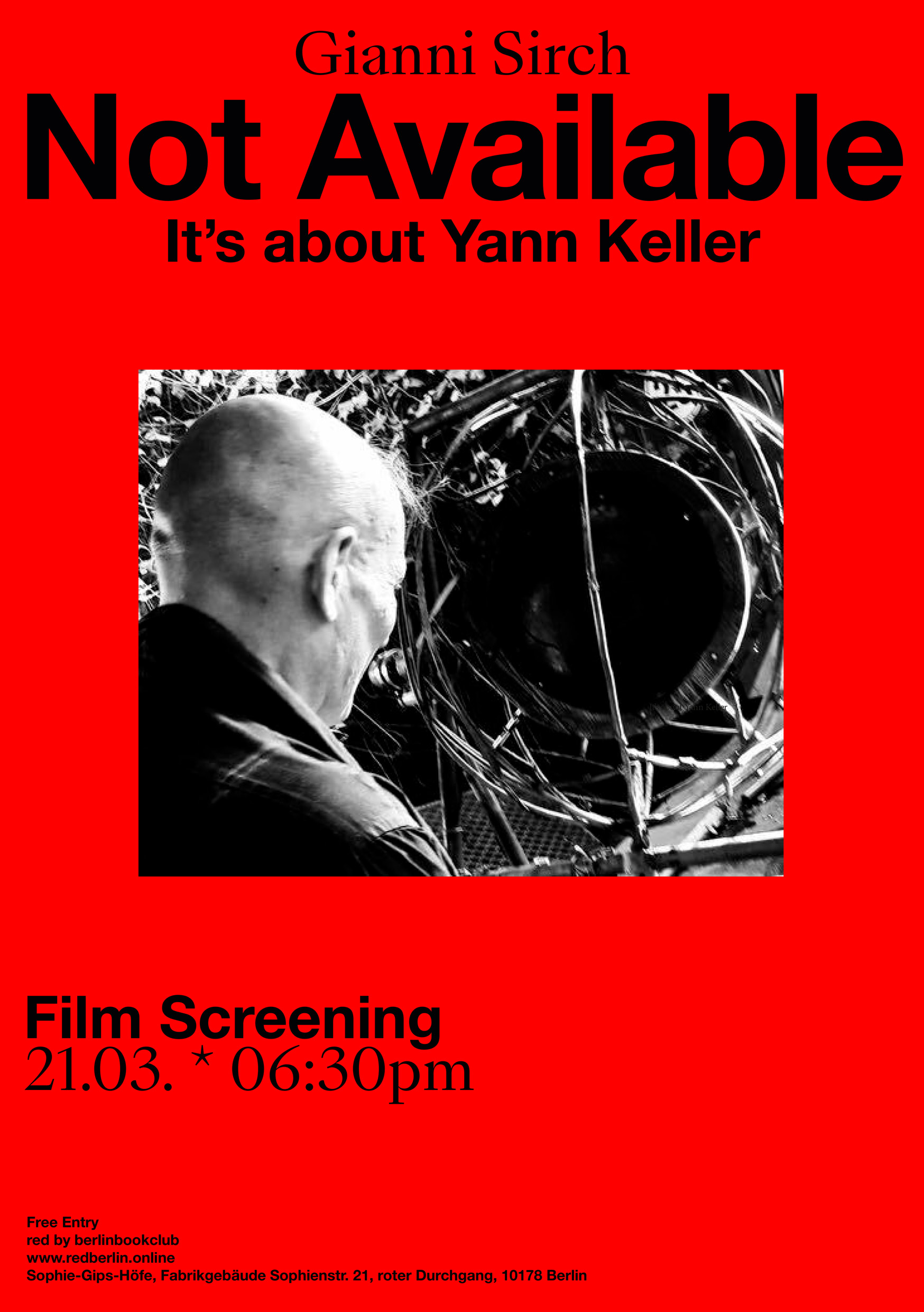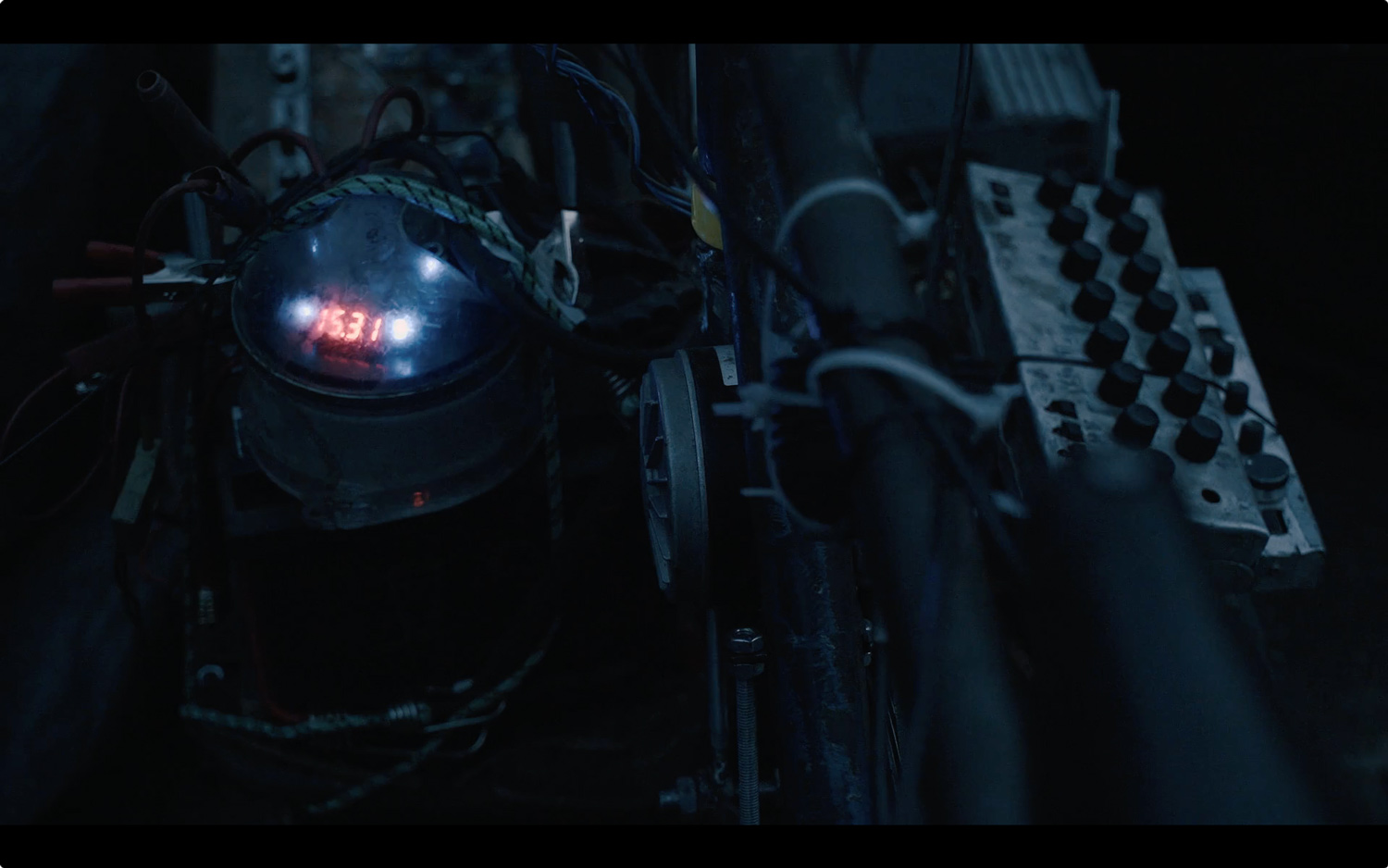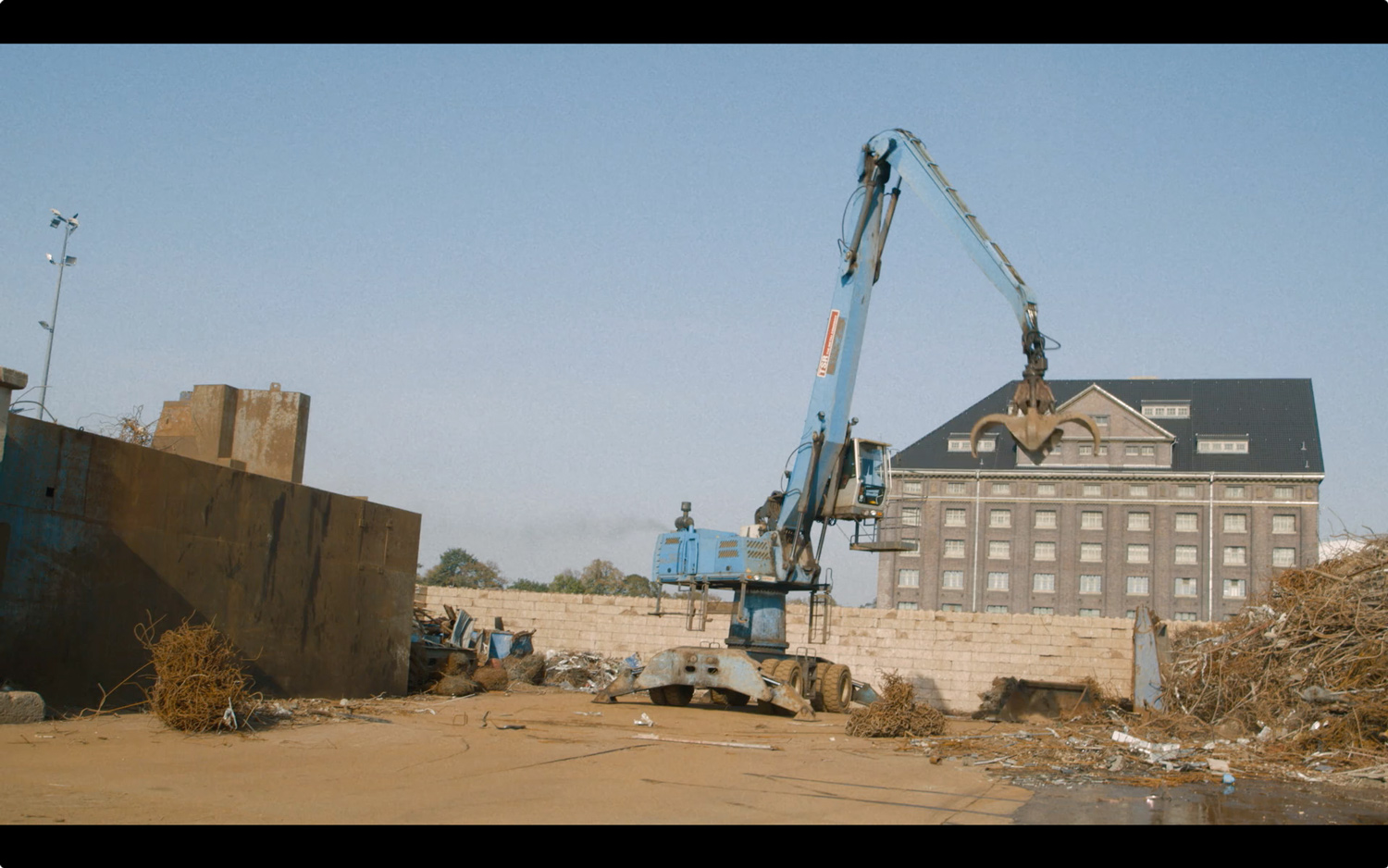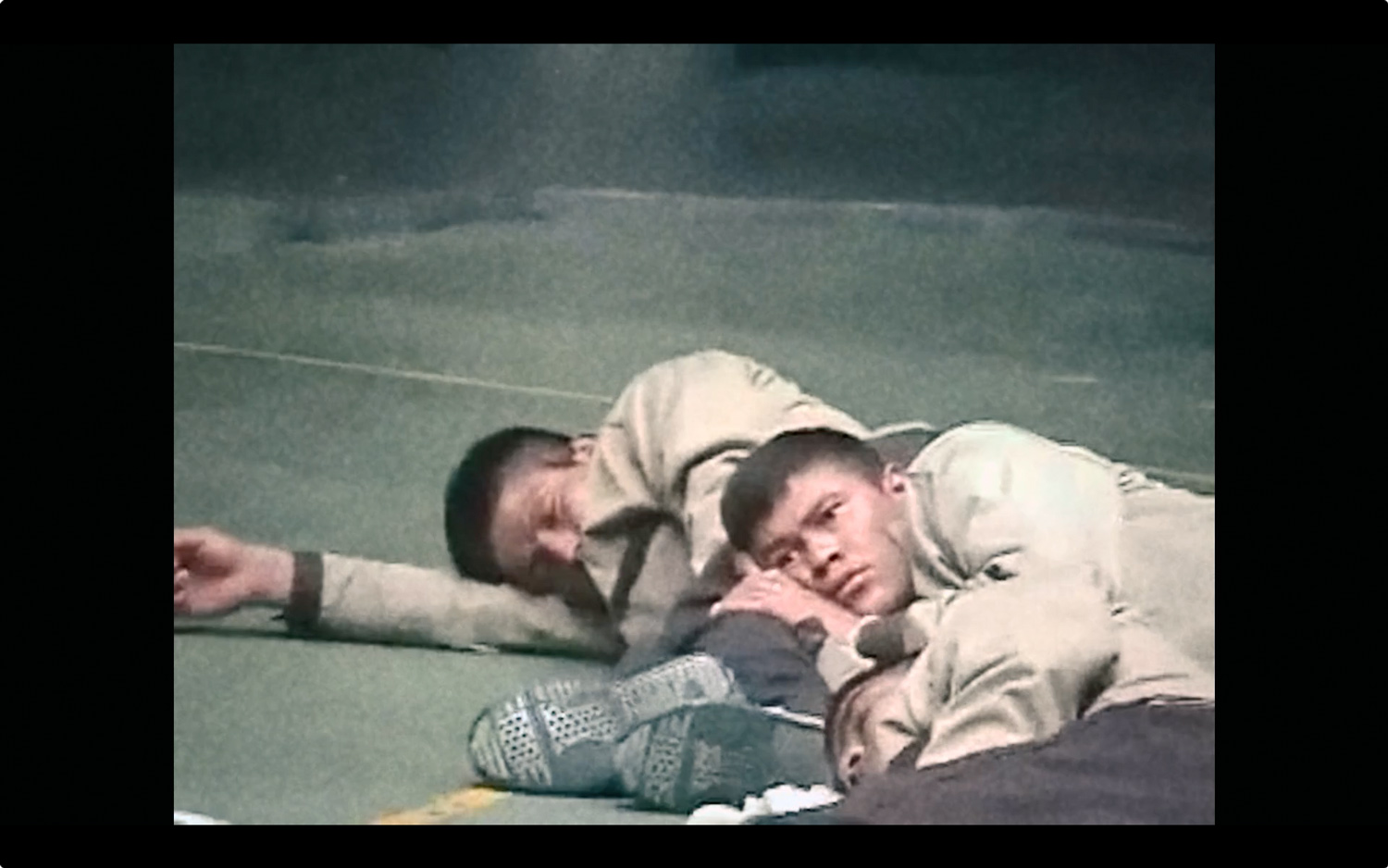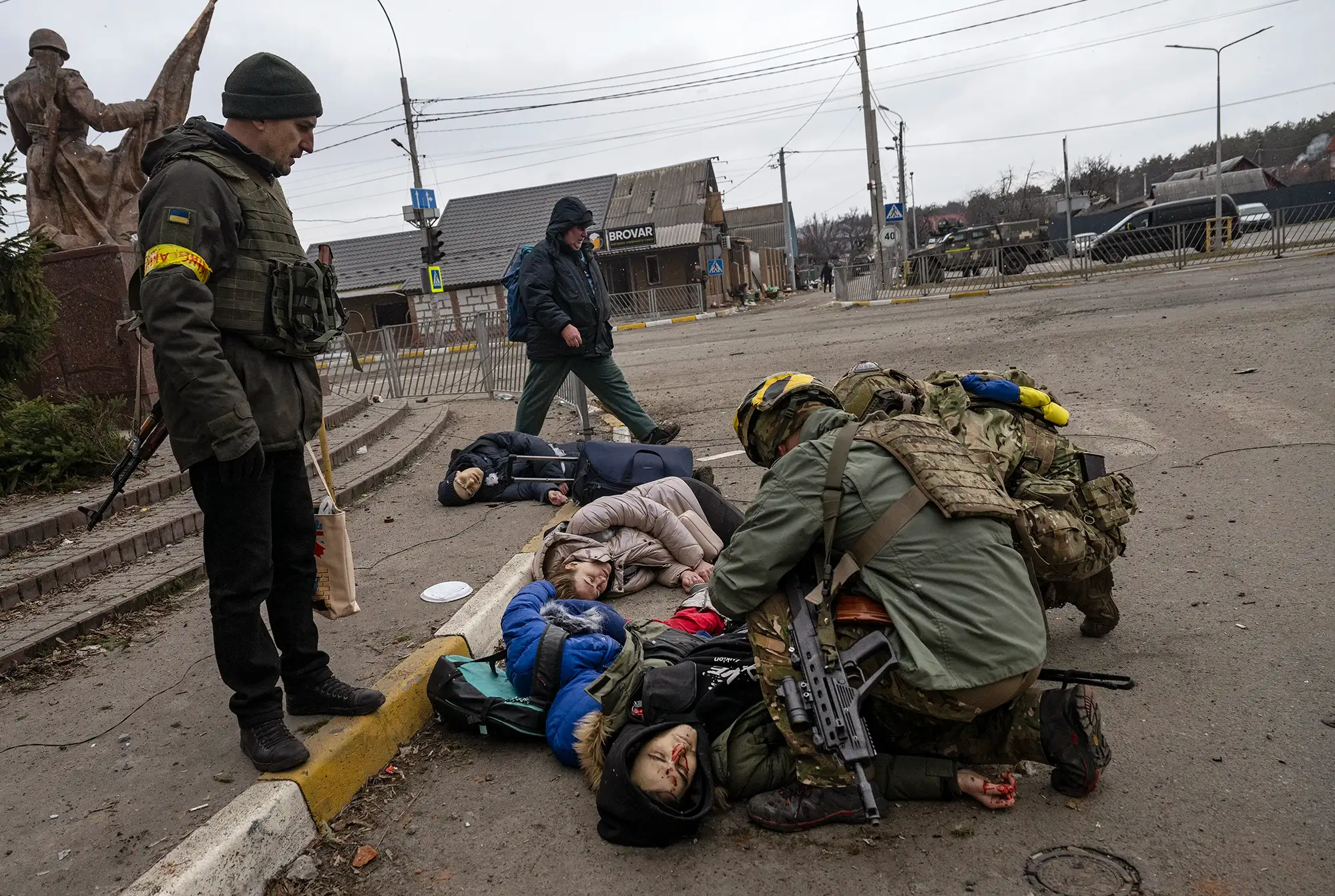HARUN FAROCKI
VIOLETTA OLIINYK
JOHANNA MARIA FRITZ
THERE MUST BE A CONNECTION BETWEEN PRODUCTION AND WAR
04.04 — 30.06.25
As implied by its title, the conceptual foundation of the
exhibition
“THERE MUST BE A CONNECTION BETWEEN
PRODUCTION AND WAR”, lies in the seminal series Auge/
Maschine (2001–2003) by
Harun Farocki (b. 1944 – d. 2014).
Starting point for Farocki’s video installation was the new kind of
imagery of war that he observed during the Gulf War of the 1990s,
heavily infl uenced by the then new military drone technology, as
well as cockpit and missile views.
He identified two key aspects still relevant today: the nature
of Operational Images – machine-made visuals created for
military or surveillance purposes, oftentimes data-heavy
and incomprehensible to the untrained eye – and the labour
underpinning these technologies. His assertion, “THERE MUST
BE A CONNECTION BETWEEN PRODUCTION AND WAR,”
highlights the industrial detachment that enables humans to
develop and deploy military drones capable of causing harm.
Though created over two decades ago, Farocki’s works resonate
with today’s omnipresence of machine-generated images. This
exhibition aims to “update” Auge/Maschine by juxtaposing
Farocki’s analysis with contemporary perspectives through two
artists whose works address Operational Images or labour in the
context of drone warfare.
The Ukrainian artist
Violetta Oliinyk (b. 1995) examines labour
through her personal and political experience. Trained in jewelry,
object-making, and performance art, Oliinyk’s practice shifted
dramatically following the full-scale invasion of Ukraine by Russia
in 2022. Repurposing her technical skills, she began assembling
FPV (First-Person View) drones for Ukrainian defense forces—
using components purchased online for €300–600. This process
highlights a complex interplay between industrial production and
manual assembly, where artisanal labour produces instruments
of war. Oliinyk’s contribution includes her 2018 diploma work, an
homage to Antoine de Saint-Exupéry’s beloved children’s book
Le petit prince, as well as two recent works infl uenced by her
drone building experience, Milidrone and Millmobille. Displayed
alongside actual FPV drone parts, this arrangement emphasizes
the materiality of war production and the return of manual labour
in high-tech warfare.
Within the exhibition a series of works by the award winning
documentary photographer Johanna Maria Fritz (b. 1994)
addresses the evolution of Operational Images. Known for her
daring coverage in confl ict zones, over the past three years Fritz
has chronicled both the Ukrainian frontlines and the lives of the
civilian population in a country at war. Her onsite practice enabled
her to capture unprecedented imagery of contemporary drone
warfare. This exhibition will be the fi rst to present her photographs
of weaponized FPV drones, their operators, and aerial perspectives
captured during missions.
To further engage visitors, FPV goggles will be available, allowing
visitors to experience fi rst-person footage of drone vision. Unlike
the abstract, data-heavy images Farocki critiqued two decades
prior, these user-friendly visuals raise urgent questions about the
shifting aesthetics and ethics of machine-made images. How does
this evolution – from abstract Operational Images to explicit HD
drone footage – alter our understanding of warfare and its visual
representation?
Together, these works create a conclusive narrative that connects
the production and utilization of drones, refl ecting on the
labour behind the technology and the visual culture surrounding
modern warfare. This exhibition invites critical refl ection on how
increasing accessibility of drone technology and imagery aff ects
public perception and detachment from violence.
Though unforeseen at the time of the making, Oliinyk’s homage
to Saint-Exupéry foreshadowed a striking parallel: Similar to the
author almost a century prior, the artist found herself in a tragic
situation. Her home was under attack and foreign occupation was
- and is still today - a very real threat. Like the author, who died
fi ghting for the French resistance against German occupation in
the 2nd World War, Oliinyk also decided to mobilize everything
she could in defense of her home – starting with auctioning her
art pieces for fundraisers and donations, learning how to build and
supply drones and eventually joining the Armed Forces of Ukraine
(AFU) herself.
Therefore, we ask anyone who can to support Violetta Oliinyk
with donations for her, her family and the Ukrainian defense
forces. Contact us for more details or directly support the artist via
Violetta Oliinyk’s Paypal: fl otilia.my@gmail.com
or her fundraiser for necessary car repairs and similar
infrastructure and services of the AFU at:
https://send.monobank.ua/jar/2a4hH689vY
This exhibition was made possible with the generous support of
the Kemmler Foundation, Antje Ehmann, Violetta Oliinyk, Simon
Melchers of ARTCO Gallery, Johanna Maria Fritz, Eidotech
GmbH and Sammlung Hoff mann/the Hoff mann Family. We are
very grateful and deeply moved by the many individual eff orts and
supporters who off ered their time, sweat and expertise to realize
this exhibition.
